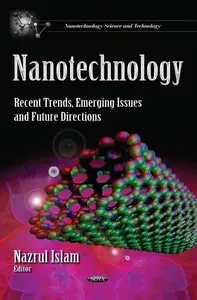Nazrul Islam, "Nanotechnology: Recent Trends, Emerging Issues and Future Directions"
English | ISBN: 1631175610 | 2014 | 515 pages | PDF | 8 MB
English | ISBN: 1631175610 | 2014 | 515 pages | PDF | 8 MB
Technology-based innovations fuel the knowledge-based economy, as it creates new industries, makes existing ones globally competitive, and drives future economic growth. In order to reach technology-based economic growth, it is not only necessary to invest capital, intellect and time in technology-related research and development (R&D), but also to execute processes related to technology development trends, diffusion patterns, and the adoption and implementation of technology-based innovations. Nanotechnology has contributed to remarkable advances in the field of science and technology in the past two decades, which have led to significant prospective applications in various technological domains including advanced materials, biotechnology and pharmacy, electronics, scientific tools and techniques, and industrial manufacturing processes. This ultra-small technology will drive a new technology-driven global economy, with revolutionary advances in almost all industry sectors through high utility and demands.
The book is written to provide an overview of the developments made in nanotechnology to date, the ongoing trends and the future prospects, together with the supply chain practices and environmental risk challenges involved, and finally, suggests key issues to be focused on in the future, finishing with managerial and policy recommendations. For over a decade, Companies are faced with the challenge of harnessing the enormous potential of nanotechnologies, while also being attuned to potential environmental, health and safety issues, and social acceptability. The lack of investigations in these areas still poses a serious barrier to the commercialization of nanotechnology-based products. This book explains how nano-science, technology and technological progress are central to economic and social well-being, and why the creation and diffusion of nano-products with secure and safe development, along with an efficient supply chain are critical drivers of adopting this technology.
It is urgent to apply nanotechnology to solve legacy environmental problems, and to encourage the replacement of existing products with new nano-products that are more environmentally friendly throughout their life cycles. The authors confer to the industry’s response to the pressures of the responsible development of nanotechnology, for making every reasonable effort to anticipate and mitigate the adverse implications or unintended consequences. The end users of nanotechnology, particularly the poor and developing countries, should be given opportunities to participate in the development of the technology, as the social factors are crucial in the adoption of nanotechnology.
One major goal of this book is to highlight the multifaceted issues surrounding nanotechnology on the basis of case studies, academic and theoretical articles, technology transfer, innovation, economics, management and policy. More than fifty experts spread in about fifteen countries with their respective understanding, perspectives and resources provide a very broad audience to accomplish the project with. This book will be a useful reference for academics, practitioners, policymakers, and professionals in the field of science, technology, engineering, innovation, management and economics.



